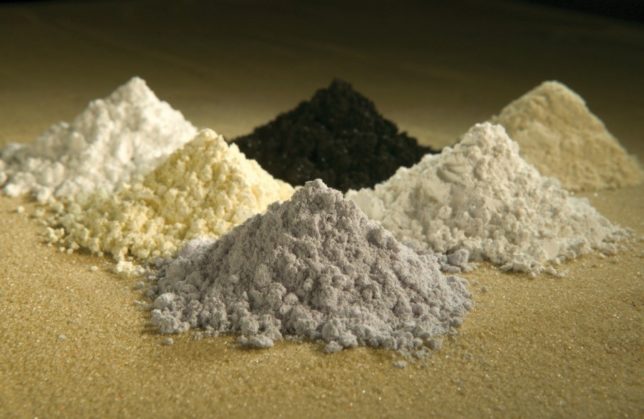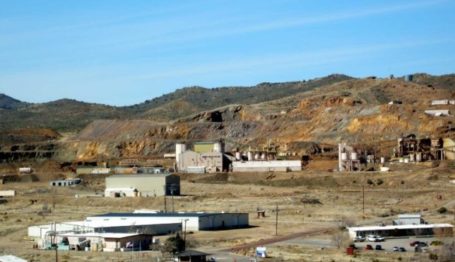Green Watch
America’s Rare Earth Ultimatum: Rare Earths in High Demand


America’s Rare Earth Ultimatum (full series)
Rare Earths in High Demand | Made in China | A National Policy of Vertical Integration | A Solution to Rare Earth Market Failure
Summary: For the past decade, our dependence on rare earths has conjured up considerable attention, fascination, and concern regarding their importance. This has caused a cascading effect to create interest and investment in other rare metals, critical minerals, ore deposits, mining, and the American mineral endowment—all related to with U.S. technology manufacturing, national security, military readiness, geopolitics, and trade, particularly with China. Rare earth elements have become the poster child for critical minerals, especially those for which we are 100 percent import dependent—the vast majority of which come from China.
Why Rare Earths Are News
From the 1960s to the 1980s, the United States was the leader in global rare earth production. Since then, China has become the world leader in rare earth mining and processing, in part due to lower labor costs, and less burdensome environmental and safety standards.
Beginning in 1990 and beyond, supplies of rare earth elements became an issue as the Chinese government tightened its control over rare earth production and exports.[i] It also began to limit the number of Chinese and Sino-foreign joint-venture companies that could export rare earth elements from China. In 1993, 38 percent of world production of rare earth elements came from China, 33 percent U.S., 12 percent Australia, and 5 percent each from Malaysia and India. Several other countries, including Brazil, Canada, South Africa, Sri Lanka, and Thailand, made up the remainder.
However, by 2008, China accounted for more than 90 percent of world production of rare earth elements, eventually growing to 97 percent by 2011, thus solidifying its worldwide rare earth monopoly.
But, in 2010, the Chinese quietly announced their intention to reduce worldwide rare earth element exports. By that time the technological uses of rare earths had already begun to explode in all industrial economies, creating an enormous global dependency on China’s exports. This created official concern among policymakers in the U.S., Japan, and the European Union, but they were powerless to do anything about it.
Due to the 2010 embargo of rare earth exports by China to Japan, exploration activities to discover new rare earth deposits ramped up quickly worldwide. Unfortunately, rare earth mining outside of China was next to nothing; but worse, even when rare earths were mined elsewhere, they still needed to be shipped to China for processing in order to convert rare earth minerals into oxides—and ultimately into usable metals and alloys to be made into components for manufacturing the final product. Unfortunately, outside of China, few countries have the capability to process rare earth oxides for commercial use.
Suddenly, the idea of rare earth element supply vulnerability became doubly real—it now involved dominance of the material supply side and the processing technology side by China. As the 2010 crisis between China and Japan played out, and even after it was resolved, U.S. policymakers asked two key questions:
- How essential are rare earths to economic well-being and national security?
- How vulnerable is the U.S. to rare earth supply disruptions?
While the U.S. had questions, China seemed to have all the answers because of their long and deep commitment to robust rare earth development. One glance at the history of Chinese activity over the past 65 years (Figure 3) demonstrates that they are the true rare earth aficionados and the world’s most serious students of the overall critical mineral industry.
If the magnitude of Chinese rare earth involvement and expertise surprises most critical mineral and rare earth analysts, then it should leave U.S. policymakers and Pentagon planners breathless, because it indicates just how badly the U.S. is lagging behind China’s critical mineral and rare earth superpower status. Answers to questions about U.S. rare earth vulnerability should be suddenly obvious. Instead, policymakers should be asking:
- Can the U.S. ever catch up to China’s strong minerals position?
- How many years will it take?
- What other critical mineral vulnerabilities beyond rare earths have been ignored at the nation’s peril?
These questions needed to be answered yesterday—but for now, rare earths are the U.S.’s critical mineral canary-in-the-coal-mine, and attention must be focused on reducing the nation’s vulnerability.
What Are Rare Earths?
Rare earths are a series of chemical elements found in the Earth’s crust that are vital to many modern technologies, including consumer electronics, computers, network communications, clean energy, advanced transportation, health care, environmental mitigation, national defense, and many others.
Rare earth elements—the best known of all critical minerals—are not, in fact, minerals. They are metals. But before that they are processed into oxide powders from mined rare earth ore. They are also among the heaviest naturally occurring non-radioactive elements. A variety of industries from energy production to manufacturing scientific, medical, and military technologies depend on using the processed metals. Rare earths take on many different forms and are referred to by a variety of terms—and each one has a specific meaning.
There are 17 rare earth elements: 15 within the chemical group called “lanthanides,” and two other associated elements—yttrium and scandium—all shown on the Periodic Table. Yttrium is commonly regarded as a rare earth element because of its chemical and physical similarities and affinities with the lanthanides. Yttrium also typically occurs in the same ore deposits as rare earth elements. Scandium is chemically similar to, and included with, rare earth elements, but it does not occur in economic concentrations in the same geological settings as the lanthanides and yttrium.
Traditionally, the rare earth elements are divided into two groups on the basis of atomic weight: (1) the light rare earth elements are lanthanum through gadolinium (atomic numbers 57 through 64); and (2) the heavy rare earth elements comprise terbium through lutetium (atomic numbers 65 through 71). Some include europium and gadolinium within the heavy rare earth elements. Yttrium, although light (atomic number 39), is included with the heavy rare earth element group.
Ironically, most rare earth elements are not as rare as the group’s name suggests. They are moderately abundant in the earth’s crust, some even more plentiful than copper, lead, gold, silver, and platinum. However, concentrated and economically minable deposits of rare earth elements are still unusual. They were named rare-earth elements because most were identified during the 18th and 19th centuries as “earths” (originally defined as materials that could not be changed further by heat) and in comparison to other “earths,” such as lime or magnesia, they indeed are relatively rare. Cerium is the most abundant rare earth element, while promethium is naturally unstable and consequently the rarest of all rare earths.
Rare earth elements are some of the most essential mineral components in today’s technology products. Tiny rare earth magnets are in all electronics from smartphones to stealth technology, while larger commercial and industrial magnets are used in the fields of medicine, propulsion, and fusion. Found in hundreds of types of consumer, commercial, industrial, and military equipment that support our everyday lives, rare earth elements are indispensable to the nation’s modern economy and national defense. Fortunately, their mystique has raised the level of awareness for most average Americans.
The amount of rare earth elements used in a product may not be a significant part of that product by weight, value, or volume; yet without specific rare earths, certain manufactured products and systems cannot operate. For example, magnets made of rare earth elements often represent only a small fraction of the total weight, but without them, the spindle motors and voice coils of desktop and laptop computers would not function.
Because of their unique magnetic, luminescent, and electrochemical properties rare earth elements enable manufacturers to produce machines and equipment with greater efficiency, performance, speed, durability, thermal stability, and magnetism. They make possible miniaturization, too, something we now take for granted. Therefore, they are key to enabling many technologies to perform with reduced weight, fewer emissions, and greater efficiency for civilians and the military.
Some estimates are that China now produces about 90 to 95 percent of the world’s rare earth oxides and is the majority producer of the world’s two strongest rare earth magnet materials—samarium cobalt and neodymium iron boron.
The rare earth element neodymium is critical to enable functionality and miniaturization of components used in electric motors in cars, speaker magnets in stereo and public address systems, and music amplifiers. With it, companies like Bose can make tall, thin, lightweight, powerful speakers that look like a pole or street light, rather than the large, heavy, clunky iron magnet speaker boxes of last century. And that is just one use—there are dozens for each of the 17 rare earth elements. New applications are being researched and produced daily, as evidenced by the incredible number of patents being issued. We are only at the very beginning of our understanding of the rare earth story, especially the wide-ranging properties, various types of alloys (combinations of metals) and the host of technology products made possible by those metals. The best example of rare earth teamwork, and where they are indispensable is in electric cars.
Without any commercial production of rare earths in the U.S., some experts on military acquisition have stated that the Pentagon is acting foolishly to advertise a grand strategy of weaponry and technology without the raw materials to back up their development plans. There is now a growing call for the Defense Department to advocate forceful support of domestic rare earth supply lines because the performance of weapons of war are a matter of life and death.
Former Assistant Secretary of the Army Dean Popps has summarized the issue extremely well by stating: “Though seemingly unimportant things like a $2 rare earth magnet steering a billion-dollar weapons platform may sound inconsequential, when our adversaries cut off our supply leveraging our greatest weakness against us, we won’t have anywhere to turn.” He refers to rare earth elements as our “Achilles heel” given our over-reliance on China.
In the next installment of America’s Rare Earth Ultimatum, learn how the United States ceded rare earth dominance to China.



